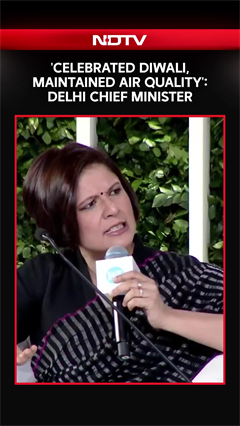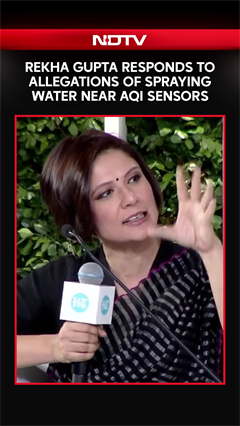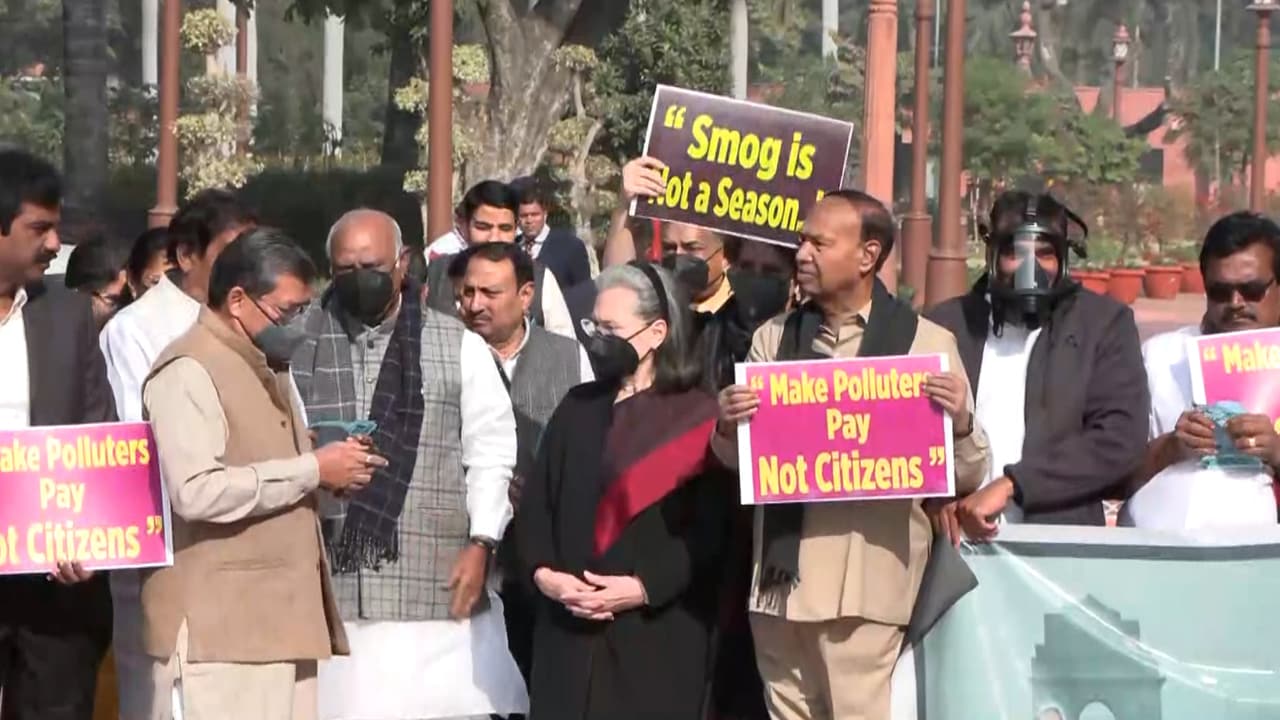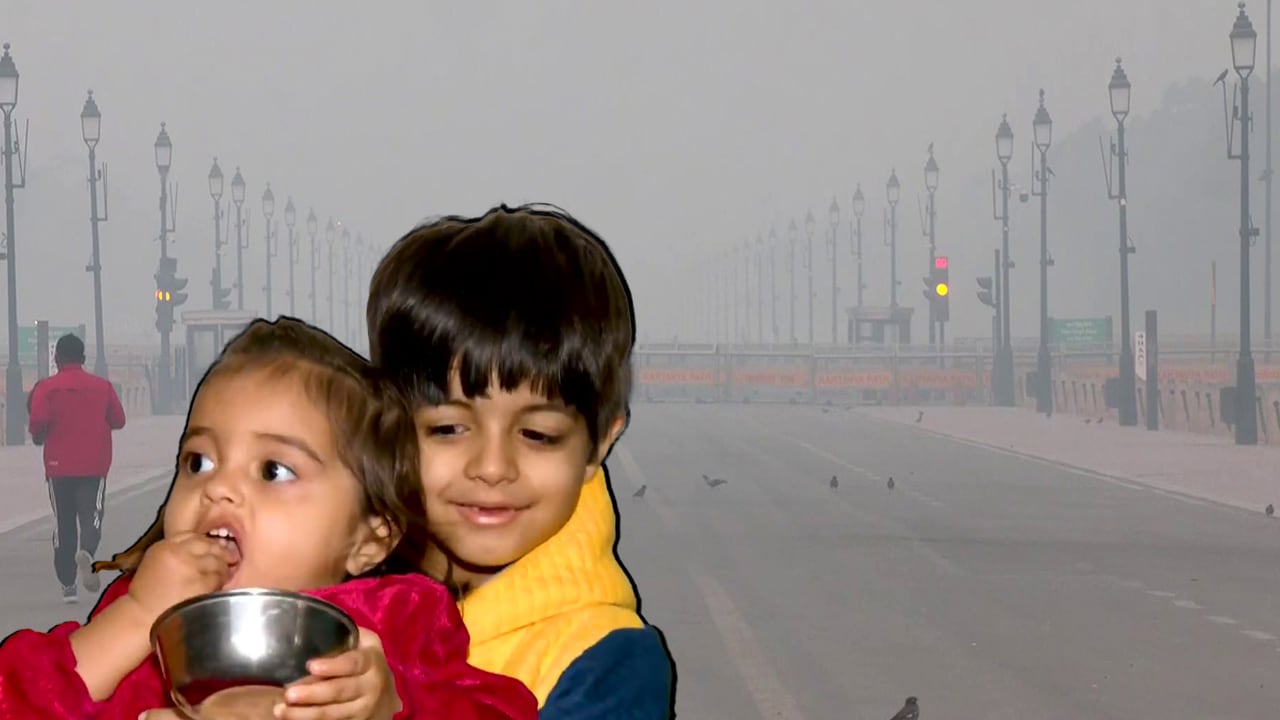- Home/
- Delhi Wakes Up To 'Poor' Air Quality, Pulmonologist Warns Of Health Risks
Delhi Wakes Up To 'Poor' Air Quality, Pulmonologist Warns Of Health Risks

The Air Quality Index (AQI) around Akshardham was recorded at 230, in the 'Poor' category, in Delhi this morning as per the Central Pollution Control Board (CPCB).
The Air Quality Index (AQI) at the Jawaharlal Nehru Stadium area recorded an AQI of 252, as seen from visuals taken near Barapullah Bridge.
Raising concern regarding higher levels of AQI, Pulmonologist Dr Sharad Joshi from Ghaziabad said to ANI, "Air Quality Index (AQI) has risen significantly, leading to higher levels of particulate pollutants from sources like crop burning, vehicular exhaust, and fireworks. This exacerbates respiratory issues for those with conditions such as COPD, asthma, or a history of tuberculosis, causing symptoms like cough, fever, breathlessness, and chest pain."
He added that even those without prior respiratory problems, especially children and the elderly, are at risk due to weakened immunity.
Dr Joshi further said that while the use of 'green crackers' during Diwali emits fewer pollutants, they are "not entirely harmless." He emphasised that vehicular exhaust remains a year-round contributor to Delhi's pollution, with the situation worsening in October and November due to stagnant weather conditions.
To mitigate the effects of poor air quality, Dr Joshi suggested, "to reduce vehicle use through carpooling, maintain vehicle pollution levels, use air purifiers indoors, ensure proper kitchen ventilation, avoid indoor pollution sources like incense, and for those with respiratory issues, continuing regular medication and considering preventive vaccines."
"Additionally, wearing N95 or double surgical masks during outdoor activities is advised for everyone to protect against poor air quality," he added.
On Friday morning, the Air Quality Index (AQI) in the national capital continued to be in the 'Very poor' category, as per the Central Pollution Control Board (CPCB).
According to the CPCB, the AQI was measured at 367 at 8 am. The highest AQI was recorded in Anand Vihar (370), followed by Wazirpur (328), Jahangirpuri (324), and Akshardham (369).
Meanwhile, several areas in Delhi recorded an AQI above 200, which means the air quality in these localities has turned 'Poor'.
Anand Vihar, Bawana, and Chandni Chowk, the AQI was recorded at 276, 367, 310, and 212, respectively. In Dwarka Sec 8, AQI was recorded at 305, Nehru Nagar at 269, IGI Airport (T3) at 221, Rohini at 245, Pusa at 224, and India Gate (200).
The AQI reading is categorised as Good (0-50), Satisfactory (51-100), Moderately Polluted (101-200), Poor (201-300), Very Poor (301-400), and Severe (401-500). Thus, the higher the AQI reading, the unhealthier it is to breathe.
Earlier on Tuesday, the Commission for Air Quality Management (CAQM) in Delhi-NCR has imposed Stage I of the Graded Response Action Plan (GRAP). The action comes after the Air Quality Index (AQI) in the region dropped to 211, categorising it as 'poor', according to a statement released by the Commission.
The Commission also considered the predictions of the India Meteorological Department (IMD) and the Indian Institute of Tropical Meteorology (IITM), which forecast poor air quality in the coming days.
This Stage I of GRAP is activated when the AQI ranges between 201 and 300. Under this stage, 27 preventive actions are to be strictly implemented by all relevant agencies across NCR. These include the use of anti-smog guns, water sprinkling, dust suppression measures in road construction, repair projects and maintenance activities.
"The Sub-Committee on, in its meeting held today, reviewed the air quality scenario in the region, IMD/IITM forecast and observed as under: The AQI of Delhi has been recorded 211 on 14.10.2025 ('Poor' Category). Furthermore, the forecast by IMD/IIT M has also predicted AQI to remain in the 'Poor' category in the coming days," CAQM said in its order.
"The Sub-Committee, accordingly, decides to invoke all actions under Stage-I ('Poor' Air Quality of the extant GRAP in the entire NCR, with immediate effect," it added.
(Except for the headline, this story has not been edited by NDTV staff and is published from a syndicated feed.)
Latest Stories
- Press Trust of India | Monday December 08, 2025 , New Delhi
Delhi's air quality remained locked in the 'very poor' category on Monday, with the air quality index (AQI) staying above 300, while forecasts suggest that pollution levels are likely to deteriorate further.
- Reported by Ashwine Kumar Singh | Monday December 08, 2025 , New Delhi
Delhi Chief Minister Rekha Gupta's remarks about the government using mist sprayers to contain pollution at hotspots has drawn a stinging response from her predecessor Arvind Kejriwal.
- Written by Rupashi Chhabra | Monday December 08, 2025
Maintaining lung health is essential for longevity. Here are five simple steps to perform an anti-pollution lung detox for long-term well-being.
- Edited by Astitva Raj | Sunday December 07, 2025
His post clearly explains the various daily challenges he faced after moving to India from Ireland.
- Edited by Srishti Singh Sisodia | Sunday December 07, 2025
These cities serve as examples of how natural surroundings and effective pollution control can contribute to cleaner air.
................................ Advertisement ................................
Latest Videos
Opinion
Blog | Well Done, Delhi. You've Turned Lung Sacrifice Into A Badge Of HonourSaikat Kumar Bose
Monday November 10, 2025Till some years back, Delhiites would ask angry questions to those in power about the capitals annual tryst with toxic air. This has changed. Those in the driving seat dont see the need to answer now.
Opinion | Why Indians Have Just Given Up On Air Pollution CrisisTanushree Ganguly
Friday December 20, 2024While some may argue that people in Delhi are now more aware of air pollution than they were a decade back, my rebuttal would be that awareness does not mean that people are concerned.
Opinion | You Must Outrage Over Filthy Air More Than Once A YearJyoti Pande Lavakare
Tuesday December 10, 2024Delhi welcomed us with monsoon rains and mangos. We were home. Fast forward a couple of years, in the winter of 2012, I found myself in denial about something other parents, mostly expats, were calling toxic air.
Opinion | Delhi's Air Pollution Situation Is Like A Bad MarriageNishtha Gautam
Friday November 22, 2024On a good day, such as today, the AQI reading in Delhi is 407. We are jubilant at the sickly sunshine trickling through the slightly dissipated smog. At least its not 1600.
दिवाली... पराली... सियासी जुगाली!Ashwini kumar
Monday November 18, 2024दिल्ली-एनसीआर में प्रदूषण का समाधान तो आज तक मिला नहीं. हर साल चिंतित होकर हम-आप सांसों की तकलीफ के साथ-साथ दिल और ब्लड प्रेशर के मरीज भी क्यों बनें?


















